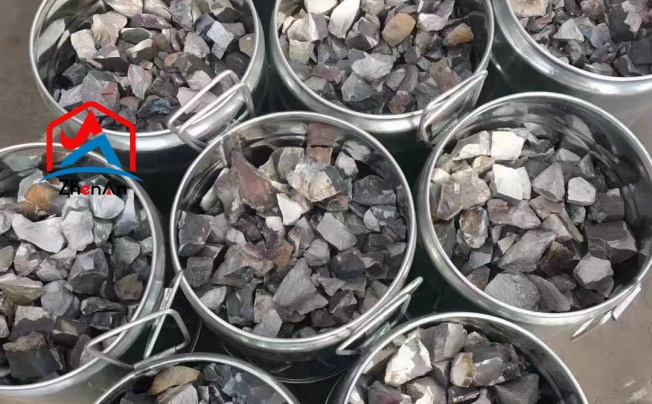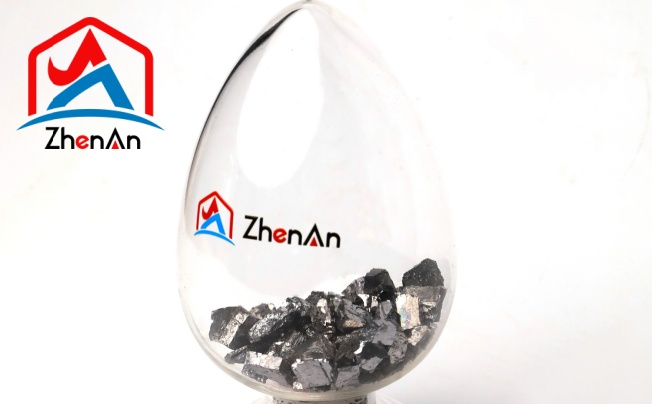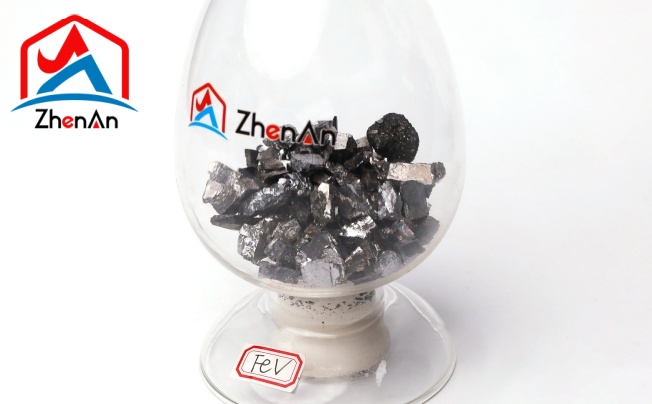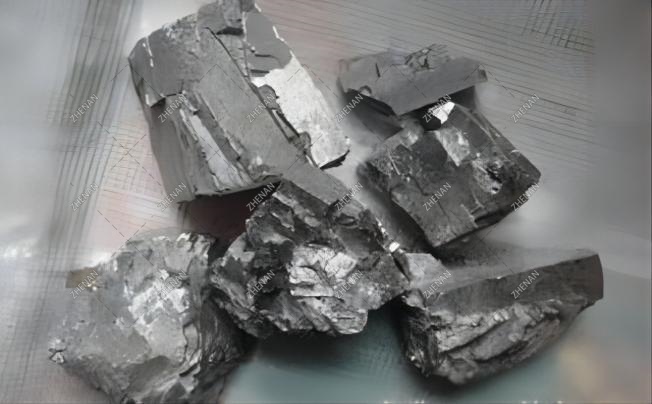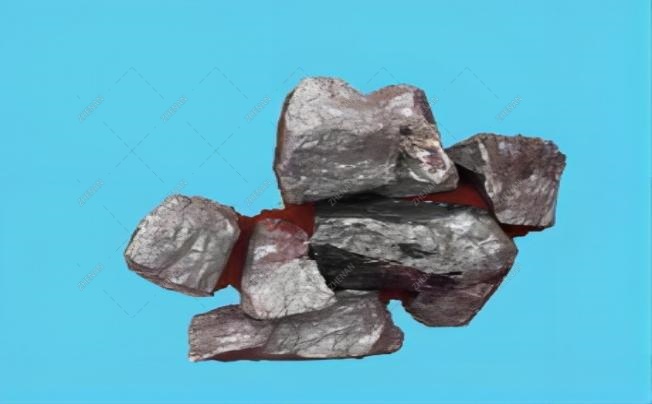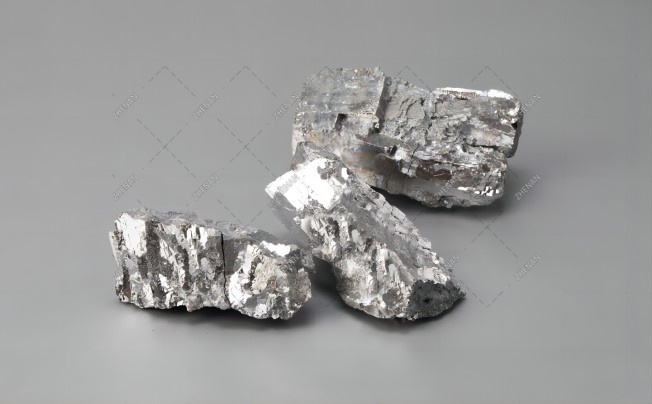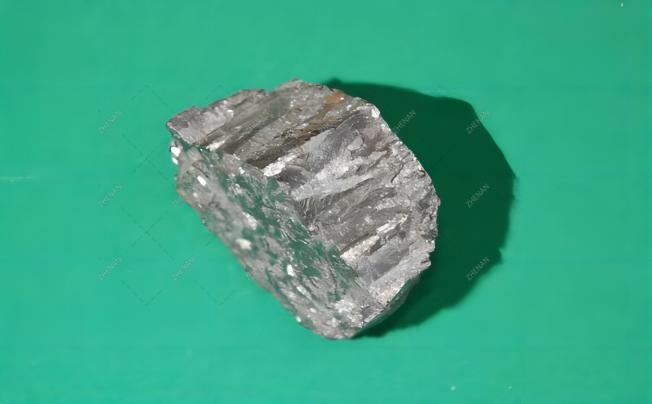Chemical Composition of Ferrovanadium
Vanadium (V): Between 35% and 85%
Iron (Fe): Approximately 15% to 65%
Similar to other alloys, depending on the raw materials used and the manufacturing method, ferrovanadium may also contain minuscule quantities of impurities or trace metals. The following are some typical contaminants or extra components that could be present in traces:
Silicon (Si) and Carbon (C) Manganese (Mn) and Aluminium (Al) Sulphur (S), Nickel (Ni), Chromium (Cr), and Phosphorus (P)
How is Ferrovanadium Produced?
Vanadium is recovered from the ore and then alloyed with iron to create ferrovanadium in a two-step process. Following is a general description of the ferrovanadium production process:
Vanadium Extraction: Vanadium-containing minerals, such as titanomagnetite or vanadium, are the primary sources of this metal. The following steps are commonly involved in the extraction process:
- Crushing and grinding: To reduce the size of vanadium-containing ores and to enhance their surface area to encourage chemical reactions.
- Roasting: To make the vanadium compounds in the crushed ore soluble in water, the ore is heated to high temperatures and then roasted.
- Leaching: To dissolve the vanadium compounds and create a vanadium-rich solution, an acidic solution is used to leach the roasted ore.
- Purification: To eliminate impurities, the vanadium-rich solution goes through some purification processes, including precipitation, filtering, and solvent extraction methods.
- Combining with iron to create a ferrovanadium alloy: Once the vanadium component has been refined (often vanadium pentoxide, V2O5), it is combined with iron (typically in the form of iron filings or pig iron).
The following steps are part of the alloying process:
- Weighing and mixing: Use an accurate scale to determine how much iron and vanadium pentoxide is needed, and then properly combine the two substances.
- Heating in an electric arc furnace: The mixture is put into an electric arc furnace, which produces a great deal of heat by starting an electric arc between two electrodes. The raw materials respond as a result of the heat melting them.
- Creation of alloys: As temperature rises, vanadium pentoxide is converted into vanadium metal, which reacts with molten iron to create an alloy called ferrovanadium. For the alloy to have the correct composition and qualities, the alloying process must be properly managed.
- Refining: Molten ferrovanadium can go through refinement procedures like slag forming or fluxing to get rid of impurities and, if necessary, further modify the alloy composition.
- Casting and Solidification: The alloy is poured into molds or ingots while still molten once it has reached the desired composition. After controlled cooling, the alloy forms into the appropriate shape.
- Finishing and sizing: A ferrovanadium ingot or casting may go through extra processing processes after solidification to achieve the form, size, and surface finish necessary for a particular application. These steps may include cutting, grinding, or machining.
What is Ferrovanadium Used For?
- Steel production: Ferrovanadium is frequently employed as an alloying agent in the steel industry. To improve the mechanical qualities of steel, such as tensile strength, toughness, and wear resistance, it is added. Steel performs better when it is coated with ferrovanadium in industries including construction, vehicle manufacturing, and tool manufacturing.
- Aerospace sector: Ferrovanadium is used to make high-strength and lightweight alloys in the aerospace industry. These alloys are used to create landing gear, engine parts, and structural elements for use in airplanes. These alloys are suited for aerospace applications due to the addition of ferrovanadium, which improves the strength-to-weight ratio of these materials.
- Chemical industry: Ferrovanadium has a variety of uses in the chemical sector. It can operate as a catalyst in chemical processes, especially those that result in the creation of sulfuric acid. Catalysts made of ferrovanadium aid in boosting the effectiveness and speed of chemical reactions.
- Pharmaceutical industry: The manufacture of some pharmaceutical products may involve the use of ferrovanadium in the pharmaceutical sector.
- Further uses: In addition to its usage in the automobile industry, ferrovanadium has further uses in the manufacture of electrical components and machinery, among other fields of endeavor.




